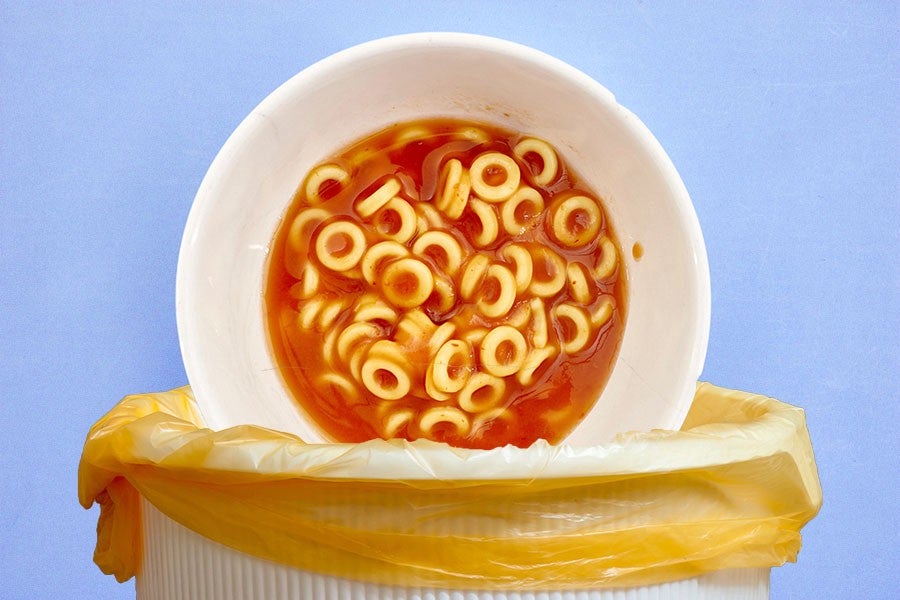Kids tend to be fussy eaters. Case in point:
And while there’s a biological reason for their pickiness — children are extra-sensitive to taste, smell and texture — the endless piles of leftover foods they create are frustrating and, for many, even guilt-inducing.
“I know that I feel bad when tossing out perfectly good food,” says Dana Hunnes, senior dietitian at the Ronald Reagan UCLA Medical Center (and mother to a four-year-old boy). “From an environmental standpoint, tossing food is tossing resources [roughly 50 percent of all produce in the U.S. is thrown away]. We also put time and effort into making food for our children, and we want them to enjoy that food as much as we enjoy preparing it for them.”
Money is a factor as well, according to psychologist Aida Vazin. “Whenever we sit down to eat, we’re unconsciously thinking, ‘If I don’t finish this, it’s money down the drain,’” she explains — and since you’re the one paying the bills, this anxiety also applies when your kid refuses to finish their Happy Meal.
But there are a few simple ways to reduce the amount of waste your child’s fussy eating creates — and no, they don’t include living off of their leftovers.
For starters, Huness recommends listening to your child. “Believe it or not, kids are excellent at regulating their own food intake — there are days when my son is absolutely famished and eats everything in sight; then there are days when he’s like a squirrel, eating only bits and pieces here and there,” Hunnes explains. “Sometimes trusting your child’s appetite is better than forcing them to eat as much as you think they should.” Per Hunnes, providing your child with a well-rounded diet rich in fruits, vegetables, whole grains, legumes, nuts and seeds (if you can actually get them to eat any of that stuff) is much more important than force-feeding them large portions.
To help your kid vocalize their appetite, psychotherapist Andrea Wachter, author of Getting Over Overeating for Teens, recommends making a game out of it. “Some kids relate to the notion of a battery that they don’t want to overcharge or drain too low,” Wachter explains. “Using this as an example, you can teach your child how to use a hunger and fullness scale, where zero indicates starving, 10 means they’re stuffed and five is neutral. Once they understand that concept, you can make a little game out of it: They can attempt to eat when their bodies are hungry (3) and attempt to stop when their bodies are full, but not stuffed (7). Better yet, you can be a role model by joining them.”
Including your child in the process of making food may also encourage them to finish their meals, according to Wachter. “Many kids feel a sense of satisfaction by eating foods that they had a part in choosing,” she explains. “This isn’t always realistic given a child’s age and food choices — if your kid only craves dessert, for example, they’re not going to be the best menu planner. But many kids enjoy choosing the protein or main dish, and choosing from the side dishes you have available.”
Teaching your kid about food waste (if they can understand that concept) is another simple way to reduce their food-wasting tendencies, according to Hunnes. “I educate my son about how food waste isn’t good for the environment, because it’s thrown into landfills and creates methane,” she explains. “He doesn’t know all those details, but he understands the basic concepts — i.e., wasting food isn’t good for the environment and costs money.”
Then of course, you can simply pack their leftovers for later. “I usually pack my son’s leftovers for lunch the next day at his preschool,” Hunnes says. “You can also freeze them for another day, or provide them as a snack at another time.”
And if they refuse to eat those leftovers, perhaps living off of leftover SpaghettiOs and half-eaten cheeseburgers isn’t the worst thing — just make sure to eat some fruits and veggies, too.

